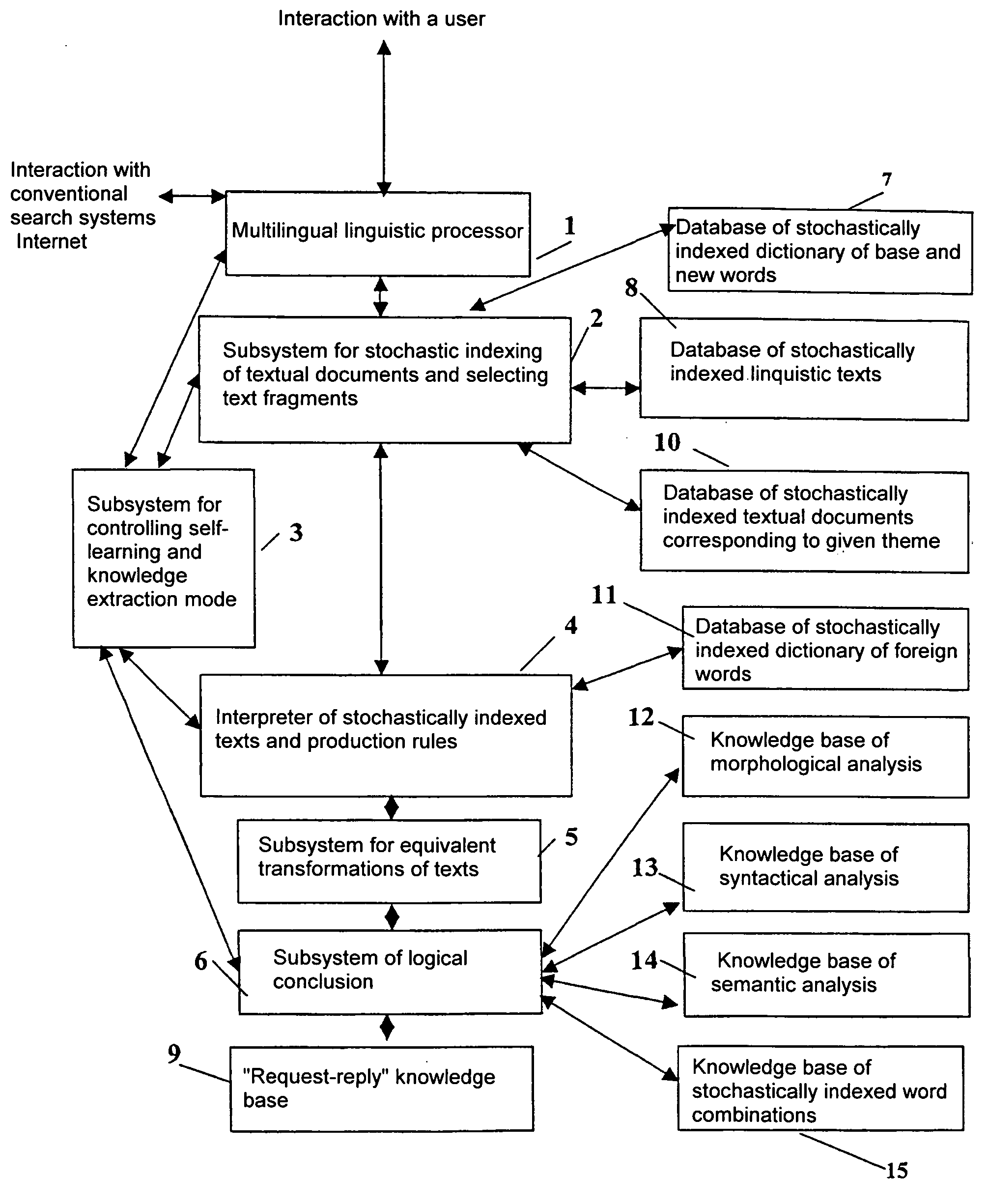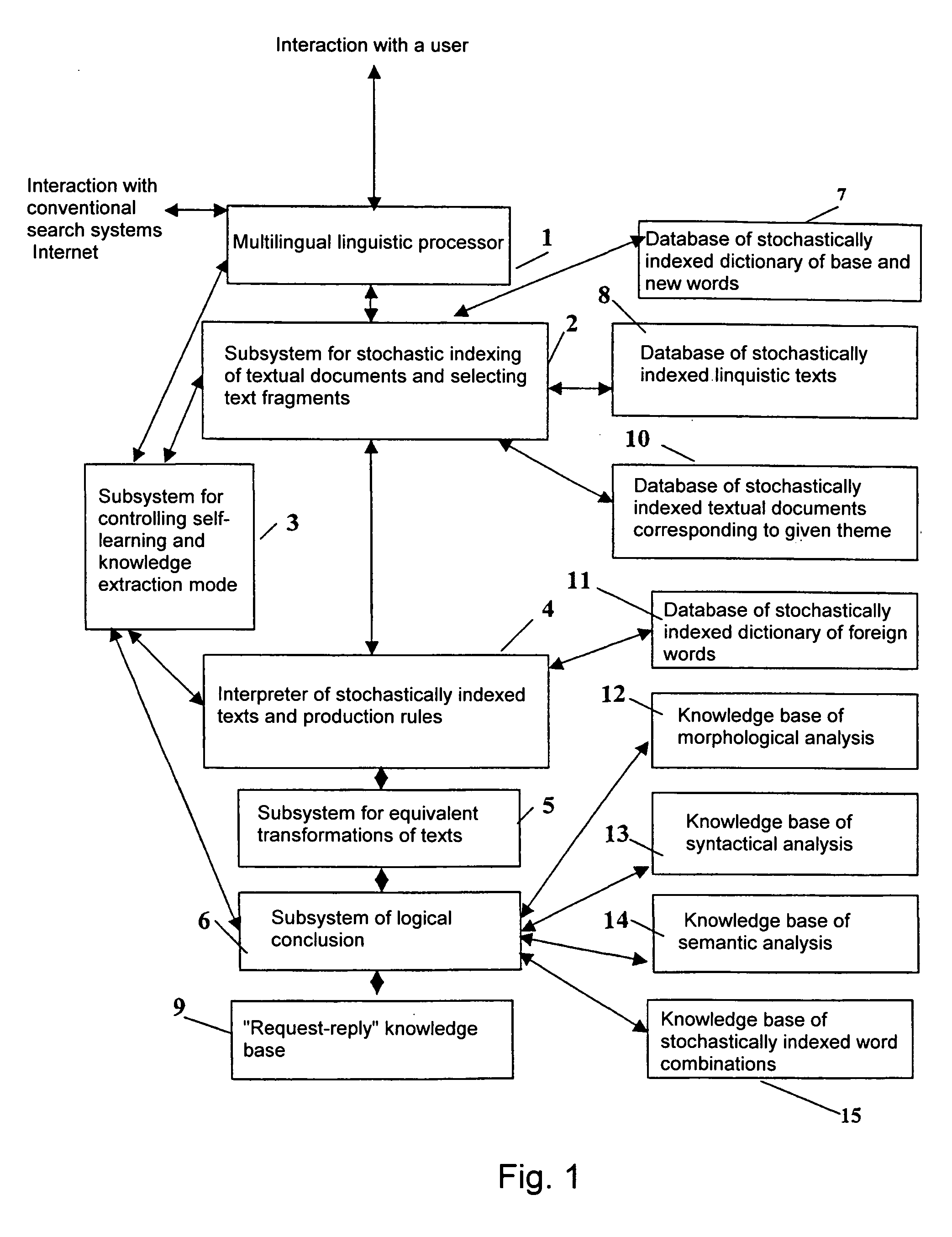Method for synthesizing a self-learning system for extraction of knowledge from textual documents for use in search
a textual document and self-learning technology, applied in the field of computer science, information search and intelligent systems, can solve the problems of insufficient efficiency of current techniques for data retrieval in search systems, complex access to knowledge by multi-million users, lack of mechanisms, etc., and achieve the effect of improving the efficiency of knowledge extraction
- Summary
- Abstract
- Description
- Claims
- Application Information
AI Technical Summary
Benefits of technology
Problems solved by technology
Method used
Image
Examples
Embodiment Construction
The terms used in this description are defined as follows:
Knowledge base—one or more specially arranged files that store a systematic set of notions, rules and facts relating to a topic.
Interrogative word combination is a word combination having an interrogative pronoun or adverb serving as the interrogative word associated with a main word in the word combination (noun or verb).
Grammatical analysis—the morphological and the semantic analysis.
Knowledge is a new textual information not explicitly contained in textual documents, which information is automatically generated by the system, using equivalent transformations and logical conclusions, in the form of a reply, and which information is relevant to a user request and intended to solve a correspondent problem in accordance with the request.
Linguistic texts are educational-methodological, scientific, reference (reference dictionaries, encyclopaedias) and other texts intended for learning a given language.
Logical concl...
PUM
 Login to View More
Login to View More Abstract
Description
Claims
Application Information
 Login to View More
Login to View More - R&D
- Intellectual Property
- Life Sciences
- Materials
- Tech Scout
- Unparalleled Data Quality
- Higher Quality Content
- 60% Fewer Hallucinations
Browse by: Latest US Patents, China's latest patents, Technical Efficacy Thesaurus, Application Domain, Technology Topic, Popular Technical Reports.
© 2025 PatSnap. All rights reserved.Legal|Privacy policy|Modern Slavery Act Transparency Statement|Sitemap|About US| Contact US: help@patsnap.com



